刚开始接触三层架构是在快两个月前,那时候找了好多例子感觉也都看不怎么懂,今天闲着没事,就把以前学的东西翻出来,算是温习温习。由于本人也接触时间不长,所以以下言论有不正确之处,多多海涵。
首先我们先要知道什么是三层架构,个人理解的三层架构就是将业务分为界面层(UI层),业务逻辑层(BLL层)和数据访问层(DAL层),各层之间各司其职,层层传递信息。
优点是可以达到高内聚,低耦合,修改起来比较容易;缺点是会降低系统性能。
UI层:就是面向用户的一层,直接与用户交互。
BLL层:用于实现业务逻辑,在UI层和DAL层中间。
DAL层:与数据库进行交互。
如图:

接下来就开始我们的项目吧!
打开VS,新建windows窗体应用程序,命名为ThreeLayers。
右键解决方案-----添加-----新建项目----类库,命名为:DAL
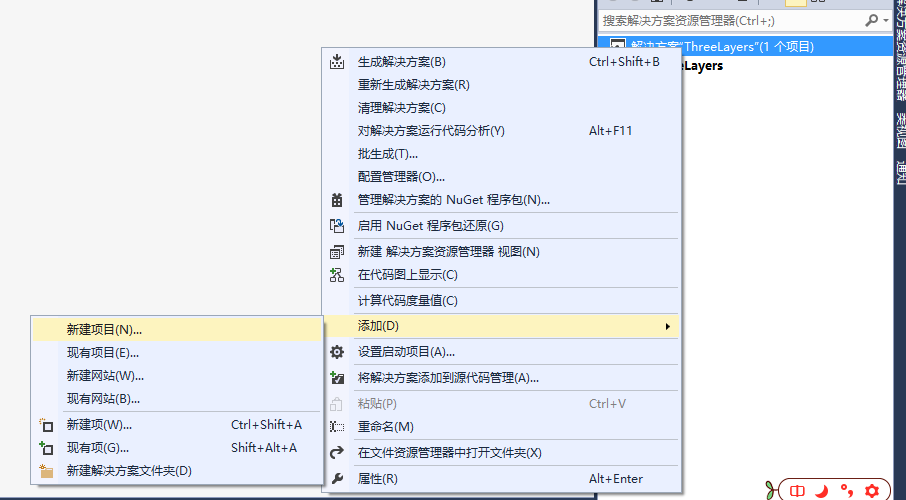
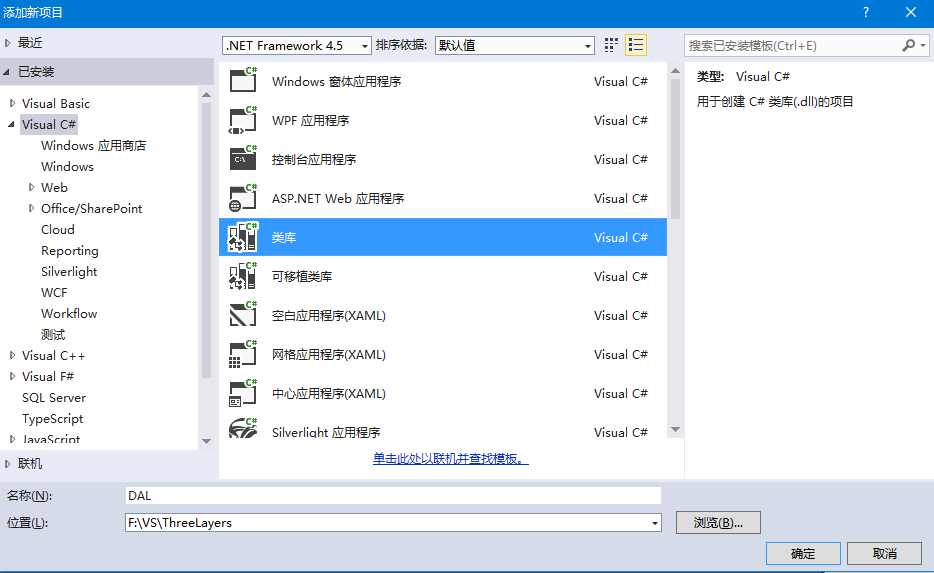
同样方式,再添加两个项目名为BLL和Model,修改各层的名字如图所示:
 接下来,就要添加引用,右键UI----添加----引用,如图所示
接下来,就要添加引用,右键UI----添加----引用,如图所示
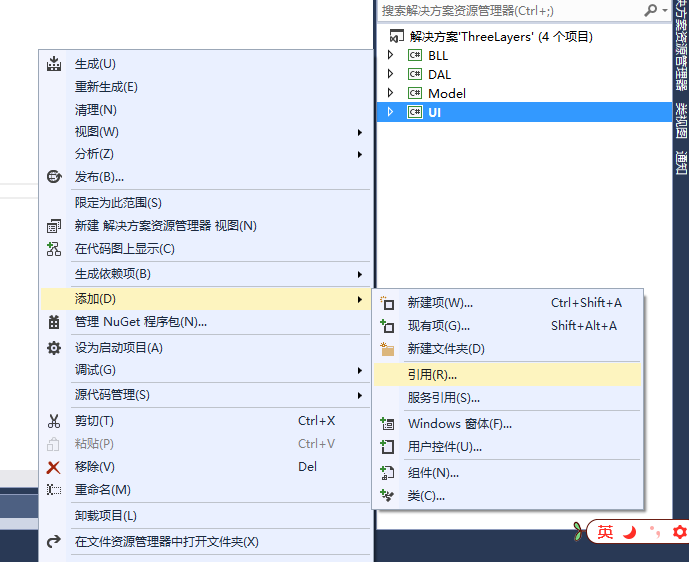
 选择BLL和Model,确定。同样,给BLL层引用DAL和Model,给DAL层引用Model和using System.Data.SqlClient。可在程序集----搜索解决方案处搜索引用。
选择BLL和Model,确定。同样,给BLL层引用DAL和Model,给DAL层引用Model和using System.Data.SqlClient。可在程序集----搜索解决方案处搜索引用。

接下来,打开UI层的Form1,对界面进行编辑,如图:

就是两个label,两个TextBox,一个button,可以在菜单的视图----工具箱里面找到。右键用户的输入框----属性,如下图所示,修改Name为:ID;同样修改密码输入框的Name为:Pass。

界面弄好之后,我们再看一看数据库方面,这个示例用的是SQL Server 数据库,在数据库中创建一个如下图的表,保存,就可以着手写代码了。
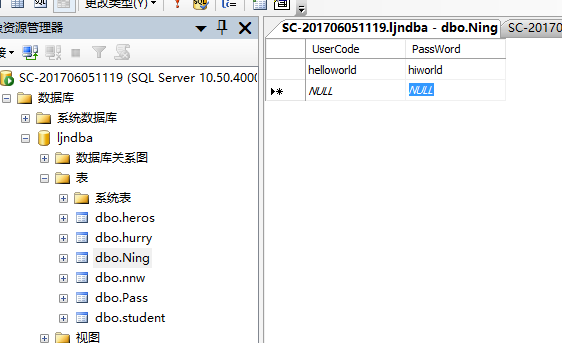
代码如下:
UI层:
using System; using System.Collections.Generic; using System.ComponentModel; using System.Data; using System.Drawing; using System.Linq; using System.Text; using System.Threading.Tasks; using System.Windows.Forms; namespace ThreeLayers { public partial class Form1 : Form { public Form1() { InitializeComponent(); } private void button1_Click(object sender, EventArgs e) { //获取输入的用户名和密码 string UserCode = ID.Text.Trim(); string PassWord = Pass.Text; BLL.bll bb = new BLL.bll(); int uu = bb.Select(UserCode, PassWord); if (uu == 0) { MessageBox.Show("登陆成功!"); }else if (uu ==1 ){ MessageBox.Show("密码错误!"); }else if (uu == 2){ MessageBox.Show("无此用户!"); } } } }
BLL层:
using System; using System.Collections.Generic; using System.Linq; using System.Text; using System.Threading.Tasks; using UI; namespace BLL { public class bll { public int Select(string UserCode,string PassWord) { DAL.dal dd = new DAL.dal(); model mm = dd.Select(UserCode, PassWord); //将输入的信息和从数据库查到的信息做对比 if (mm != null && mm.UserCode == UserCode) { if (mm.PassWord == PassWord) { return 0; } return 1; } return 2; } } }
DAL层:
using System; using System.Collections.Generic; using System.Linq; using System.Text; using System.Threading.Tasks; using System.Data.SqlClient; using UI; namespace DAL { public class dal { //数据库连接命令。server后边的.是本地服务器的意思,相当于localhost ,为了方便写成了“.”, //initial catalog后面是你数据库的名字,uid是你数据库的登录名,pwd是登录密码。 string ConText = "server=.;initial catalog= ljndba; uid =chouningning; pwd=chouningning"; public model Select(string UserCode,string PassWord) { model mm = null; try { SqlConnection con = new SqlConnection(ConText); con.Open(); //Ning是刚才你建的表的名字 SqlCommand cmd = new SqlCommand("select * from Ning where UserCode='"+UserCode+"'",con); SqlDataReader reader = cmd.ExecuteReader(); while (reader.Read()) { if (mm == null) { mm = new model(); } mm.UserCode = reader.GetString(0); mm.PassWord = reader.GetString(reader.GetOrdinal("PassWord")); } }catch(Exception ex){ } return mm; } } }
Model层:
using System; using System.Collections.Generic; using System.Linq; using System.Text; using System.Threading.Tasks; namespace UI { public class model { public string UserCode { get; set; } public string PassWord { get; set; } } }
最后运行结果如下:
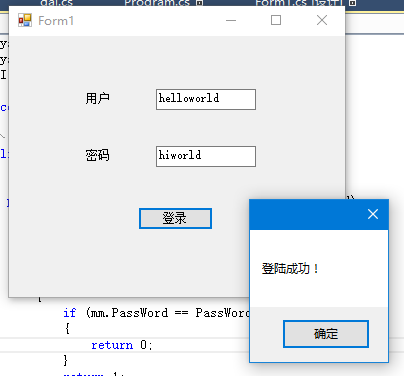
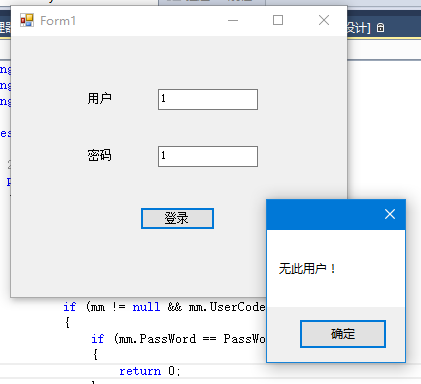

第一次写博,不足之处,多多包涵!